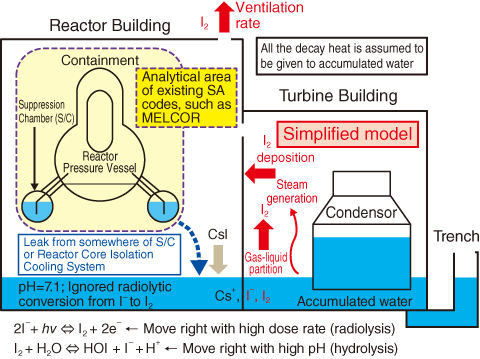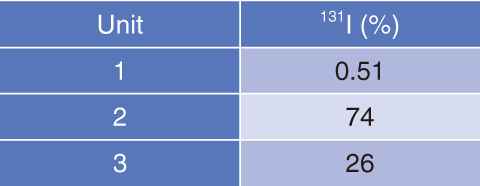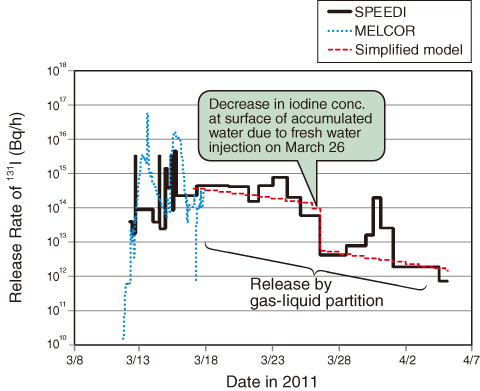
Fig.1-37 Schematic of contaminated water accumulation in the basements of reactor building and turbine building and the release from the accumulated water considered in present simplified model
Table 1-3 Estimated fractions of 131I in accumulated water to each core inventory in late March


Fig.1-38 A comparison of the 131I release rate between our simplified model and SPEEDI reverse estimation
During the process of core cooling in the accident at the TEPCO’s Fukushima Daiichi NPS (1F), large amounts of contaminated water accumulated in the basements of the reactor buildings (Fig.1-37). The present study estimated the quantity of I-131 (131I) in the water as of late March in 2011 based on the data made available to the press. The estimation showed that a significant fraction of the 131I inventory was dissolved in water (Table 1-3).
Most of 131I released from the fuel would be dissolved as I– in water, while some of the I– could become I2 and be released as a gas phase due to the gas-liquid partition in the case of acidity. This and the ventilation of the reactor buildings result in an increase in the release of 131I into the environment.
Many analyses of 131I release have been attempted, mainly using the two methods. One is reverse estimation using the atmospheric dispersion code SPEEDI combined with the environmental monitoring data. The other is estimation using severe accident analysis codes, such as MELCOR. No large difference was found in the cumulative release to environment between the two methods. However, SPEEDI predicted continuous release for longer than one month, whereas MELCOR predicted that it would stop after March 17 due to the decrease in release from the cooled core (Fig.1-38).
In the present study, we prepared a simplified model of 131I release from the accumulated water, and tried to simulate the continuous 131I release predicted by SPEEDI after March 17.
The pH in the water after March 17 was assumed to be constant at the value of 7.1 measured on March 27. The ventilation rate of the reactor building was determined from the steam generation rate, assuming that all the heat from the decay is given to the water. The decrease in the I2 release at the time of fresh water injection for core cooling on March 26 was simulated by the stratification of water, due to difference in specific gravity between fresh and sea waters. The simplified model well-reproduced the release baseline predicted by SPEEDI (Fig.1-38).
The present study showed that the 131I release from the accumulated water may explain the release between March 17 and 26. This strongly suggests a need for improvement of the current MELCOR approach, which treats the release only from containment breaks.
We plan to further improve the present simplified model through detailed investigation of the effect of revaporization or resuspension of 131I once-deposited on the wall surface, as well as the stratification of accumulated water at the time of fresh water injection.